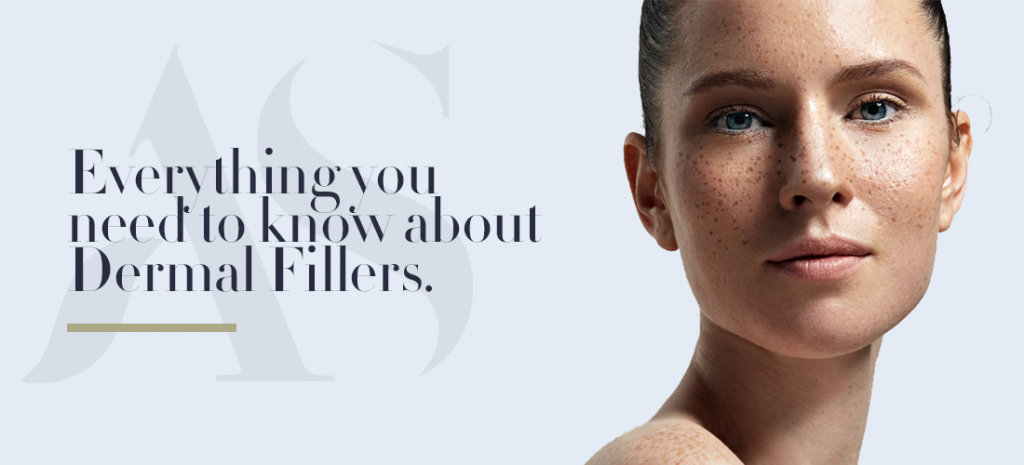Dermal fillers are volumizing gels that can be used to restore lost volume, augment areas of natural volume loss, and modify facial features.
Dermal fillers are reversible and temporary. Their longevity is estimated to be between 6 and 18 months, depending on the product’s kind and uncontrollable human biological features. Despite this, it is widely acknowledged that the durability of fillers is unpredictable. Occasionally, they may be metabolised by the body in as little as a few months. More often than not, fillers are seen to last for many years (as evidenced by MRI studies of the face performed years after dermal filler injection).
Dermal Fillers: Factors to Consider
When determining whether or not to receive dermal filler treatment, longevity is a crucial factor to consider. It is essential to understand that filler longevity cannot be guaranteed, and you must base your decision on the likelihood of longevity. Numerous individuals who claim that filler does not last on them fail to realise the following critical factors:
- The absence of visible effect does not negate the presence of the filler.
- Initial swelling may create the impression of a more prominent effect, which, as it subsides, leaves you feeling dissatisfied or unable to detect a discernible difference (people tend to forget how they appeared before a treatment);
- Fillers can move to other facial areas (usually when larger amounts are used more frequently);
- People age above their fillers (the effect has not worn off, but your face tissues have continued to age).
By injecting a dissolving enzyme, it is possible to instantly reverse the effects of dermal fillers. In general, dermal filler is reversed when a problem develops, when the results are unsatisfactory, or when they are no longer desired. The removal of dermal filler is risk-free, but can cause bruising and inflammation. Additionally, there is a small chance of allergic responses. Therefore, dermal filler reversal should only be performed when absolutely necessary.
Dermal Filler Types
There are numerous forms of HA dermal fillers on the market. Specific rheological and other qualities distinguish them. Each form of HA has its own distinct set of features that should be considered when deciding which HA gel to utilise. The following are the primary characteristics of HA dermal fillers:
- Cross-linking: (the degree to which the gel particles are linked);
- Hygroscopicity: (the amount of water that a gel can store);
- Monophasic or biphasic: (mono – the gel includes only one form of dermal filler particles; biphasic – the gel contains two types of filler particles);
- Filler concentration: (the amount of filler in a particular amount of gel);
- Viscoelasticity (G’ or G-prime): (the resistance of the gel to a change in shape, as well as its proclivity to spring back to its previous shape when any force or pressure applied to it has stopped);
- Cohesivity: (the degree to which the gel tends to stick together and not separate. Associated with crosslinking).
Longevity and ‘thickness’ are not accurate measures of dermal fillers and should not be used to determine which type of HA gel is best for a given treatment. Using a gel based on these qualities may result in the inappropriate gel being injected for the therapeutic aim, increasing the chance of hard lumps that must be reversed (this is especially true when it comes to lip filler procedures).
Risks of Dermal Fillers
Because of their reversibility, HA dermal fillers are very safe. However, dermal filler injections have the following risks:
- Bruising;
- Swelling;
- Redness and local tenderness;
- Mild and temporary headache;
- Infections;
- Nodules (firm lumps);
- Foreign body reactions including granulomas (where the body identifies the filler as foreign material and reacts to it, forming local swelling, redness, pain and scar tissue)
- Allergic reactions;
- Over or under correction;
- Asymmetry;
- Lumps (possibly due to over injection of filler);
- Loss of vision (extremely rare));
- Stroke (extremely rare);
- Skin ischaemia and necrosis (if ischaemia is not treated promptly): this occurs when blood flow is impeded by dermal filler and the skin loses its blood supply.
Certain parts of the face have various risk profiles in terms of complication. The greatest way to minimize risk is to ensure that you are treated by someone who has vast experience. The concerns of a procedure cannot be eliminated, and you must acknowledge them before deciding whether or not to proceed with treatment.
Dermal fillers are commonly sold in 1ml syringes. Some varieties include significantly more or less. The total amount of dermal filler is less essential than the type and application of dermal filler. Using fewer amounts is always preferred because adding more is easier and more predictable than reversing filler. Finally, it is crucial to understand that specific parts of the face may only accommodate a particular amount of dermal filler before being overstretched. Due to the elastic qualities of face tissue, overstretching can result in progressive migration. Lip fillers are the most often used example of this.
The following is a guide on how much dermal filler can be used in each part of the face:
- Lips: up to 1ml;
- Nose: less than 1ml;
- Upper eyelid: up to 1ml;
- Under eye: up to 1ml;
- Forehead: 2-4mls;
- Cheeks: 2-4mls;
- Chin: 1-3mls;
- Jawline: 2-8mls;
- Side profile: 4-9mls;
- Total face: 4-12mls.
The volume does not have to be given fully at once. Treatments might be spread out across several sessions. The disadvantage of this technique is that you will have to attend many visits (which will take time) and go through multiple phases of recovery.
Do you want to find out if dermal fillers are right for you? Find out more about dermal fillers here.

